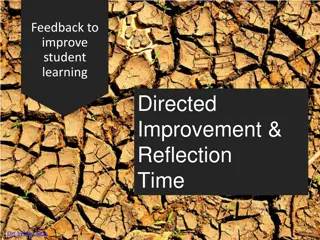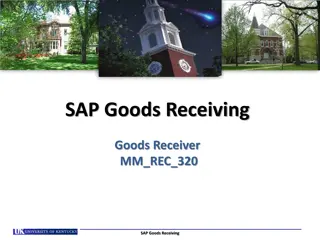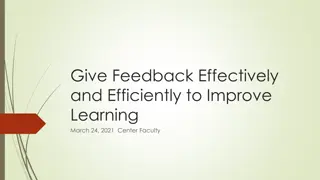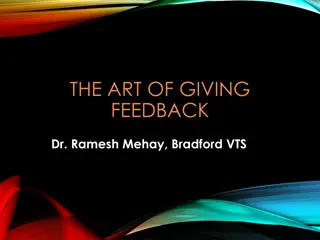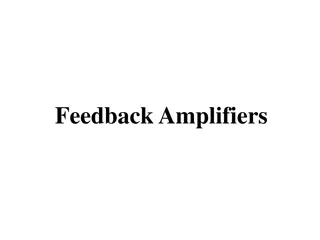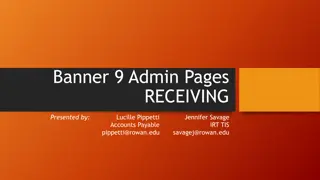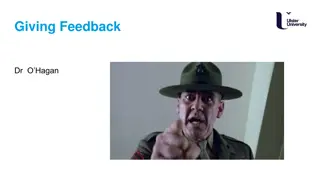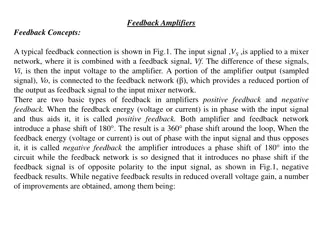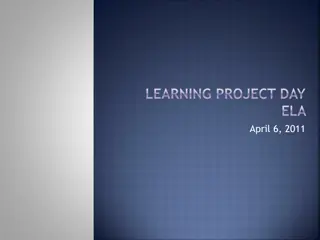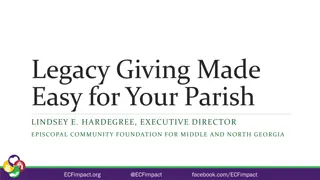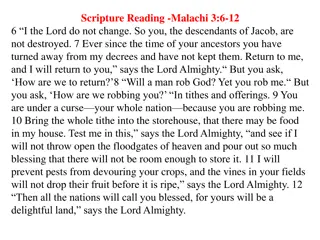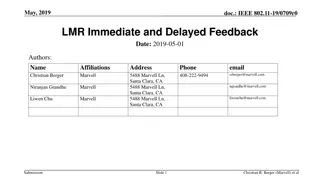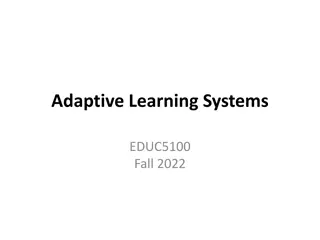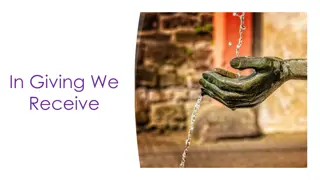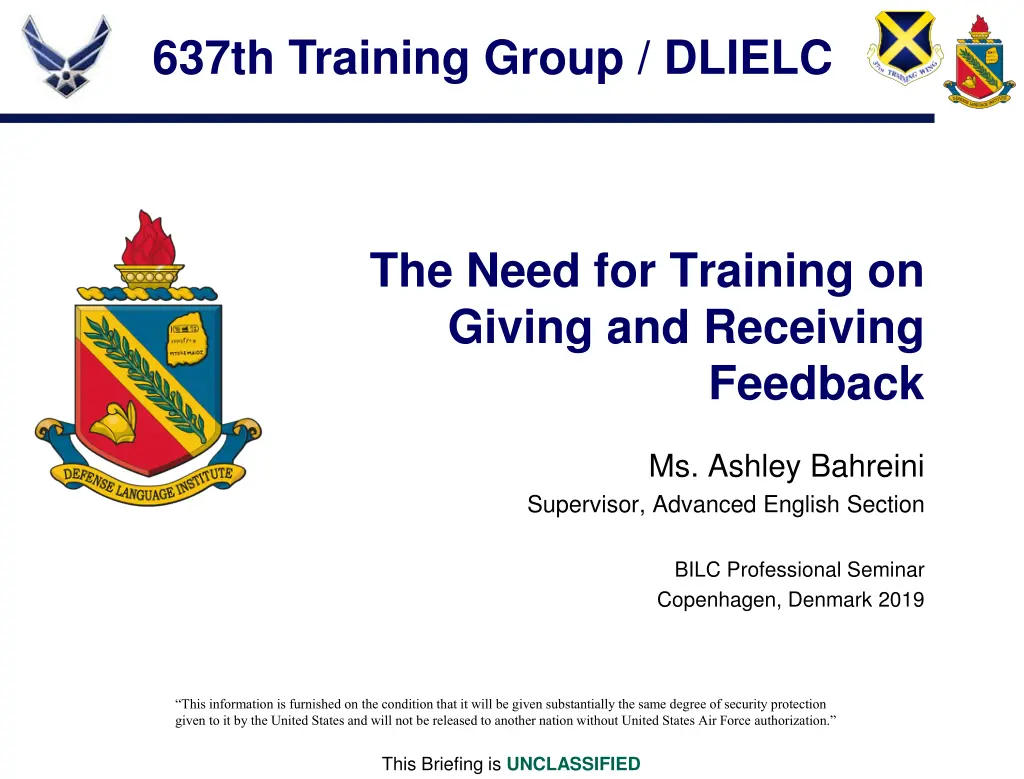
Understanding Feedback in Learning Environments
Explore the evolution of feedback, its crucial role in learning, and training methods for effective feedback delivery. Gain insights into historical feedback models, qualities of useful feedback, and strategies to combat defensiveness. Learn how feedback can enhance teaching success and bridge the gap between teaching and learning outcomes.
Download Presentation

Please find below an Image/Link to download the presentation.
The content on the website is provided AS IS for your information and personal use only. It may not be sold, licensed, or shared on other websites without obtaining consent from the author. If you encounter any issues during the download, it is possible that the publisher has removed the file from their server.
You are allowed to download the files provided on this website for personal or commercial use, subject to the condition that they are used lawfully. All files are the property of their respective owners.
The content on the website is provided AS IS for your information and personal use only. It may not be sold, licensed, or shared on other websites without obtaining consent from the author.
E N D
Presentation Transcript
637th Training Group / DLIELC The Need for Training on Giving and Receiving Feedback Ms. Ashley Bahreini Supervisor, Advanced English Section BILC Professional Seminar Copenhagen, Denmark 2019 This information is furnished on the condition that it will be given substantially the same degree of security protection given to it by the United States and will not be released to another nation without United States Air Force authorization. This Briefing is UNCLASSIFIED
Overview History of feedback Feedback s role in learning Feedback categories Qualities of useful feedback Feedback training for teachers Feedback training for students Combating defensiveness This Briefing is UNCLASSIFIED
Feedback Defined the process of providing observations and interpretations about students assignments or learning to assess the strengths and weaknesses of the learner while providing suggestions and opportunities for improvement. This Briefing is UNCLASSIFIED
History of Feedback Past: Transmission Model Teacher-centered Passive students Linear process Like a radio Disempowers learner This Briefing is UNCLASSIFIED
History of Feedback Current: Dialogic Model Student-centered Active students Two-way Like a conversation Teacher assists This Briefing is UNCLASSIFIED
Feedback Approaches Audiolingual method Avoid negative feedback Humanistic model Feedback should be positive Skills-based model Positive AND negative Post-method era Less prescriptive about feedback This Briefing is UNCLASSIFIED
Feedbacks Role in Learning Learning outcomes Adjust teaching strategies Teacher Teaching success Gap between teaching & learning This Briefing is UNCLASSIFIED
Feedbacks Role in Learning Trouble- shoot learning & performance Student This Briefing is UNCLASSIFIED
Feedback Categories ?? Teacher to student Self-evaluation Peer to peer Whole class This Briefing is UNCLASSIFIED
Qualities of Useful Feedback HOW This Briefing is UNCLASSIFIED
Qualities of Useful Feedback This Briefing is UNCLASSIFIED
Feedback Training for Teachers Experiment in low-risk situations Role-play with other teachers Ask for feedback on oneself Be reminded of feedback overload Be aware of cultural differences Have a plan for how a student acts on feedback This Briefing is UNCLASSIFIED
Feedback Training for Teachers Be mindful of the power dynamic Design curriculum to include feedback Learn to use feedback to adjust teaching Learn to not water down feedback Train to differentiate between written vs. oral feedback, also feedback on different skills, and feedback for different levels This Briefing is UNCLASSIFIED
Feedback Training for Students Help students understand the purpose of feedback Train learners on how to respond to feedback while receiving it Train students on how to act on feedback after receiving it Share one s own shortcomings and failures Remind that learning is more important than grades Explain that feedback isn t about failings as a person but shortcomings on work or learning goals This Briefing is UNCLASSIFIED
Feedback Training for Students Remind students of the difference in feedback for different tasks, assignments, and skills Give students permission to respond, dialogue, and even disagree Role-play feedback sessions Teach students how to interpret feedback Help students understand that a fight-or-flight response is normal This Briefing is UNCLASSIFIED
Combating Defensiveness base on goals/targets accept emotions as natural relationship make feedback understandable give a chance to respond more feedback choose the best -time - location -duration This Briefing is UNCLASSIFIED
The Bottom Line Feedback Feedback is teachable, learnable, and improvable! This Briefing is UNCLASSIFIED
References Ellis, R. (2009). Corrective Feedback and Teacher Development . L2 Journal, 1(1), 3 18. doi: 10.5070/l2.v1i1.9054 Harvard Business Review. (2016). Delivering Effective Feedback (1st ed.). Boston, USA: Harvard Business School Publishing Corporation. Sutton, P. (2009). Towards Dialogic Feedback. Critical and Reflective Practice in Education, 1(1). Retrieved from https://betalive.marjon.ac.uk/research/critical-and- reflective-practice-in-education/volume-1-issue-1/Sutton-CRPE-vol-1-issue-1.pdf Wilson, A. (2012). Student Engagement and the Role of Feedback in Learning. Journal of Pedagogic Development, 2(1). Retrieved from https://www.beds.ac.uk/jpd/volume-2-issue-1/student-engagement-and-the-role-of- feedback-in-learning This Briefing is UNCLASSIFIED
637th Training Group / DLIELC Discussion? The Need for Training on Giving and Receiving Feedback Ms. Ashley Bahreini Supervisor, Advanced English Section This information is furnished on the condition that it will be given substantially the same degree of security protection given to it by the United States and will not be released to another nation without United States Air Force authorization. This Briefing is UNCLASSIFIED

